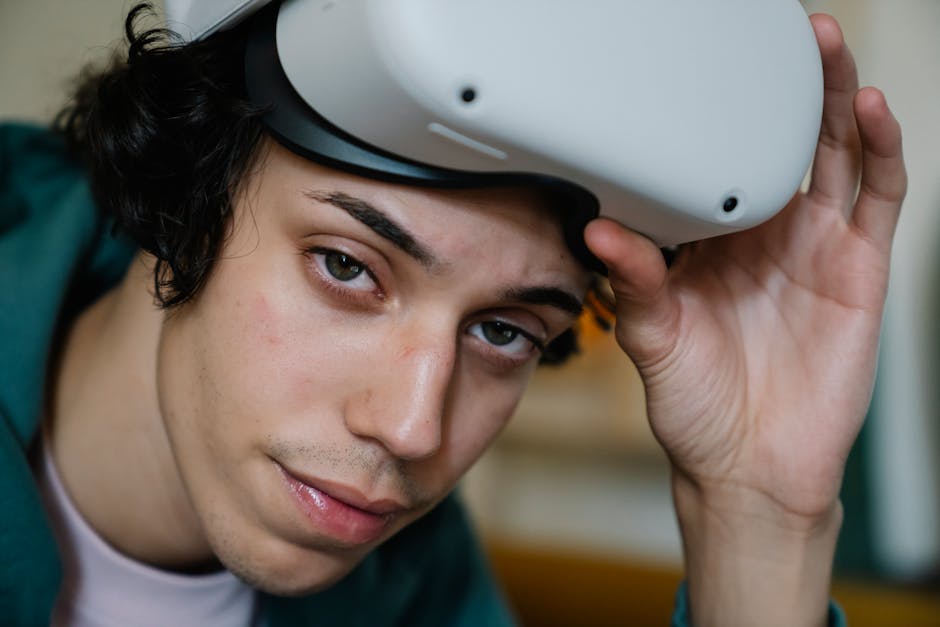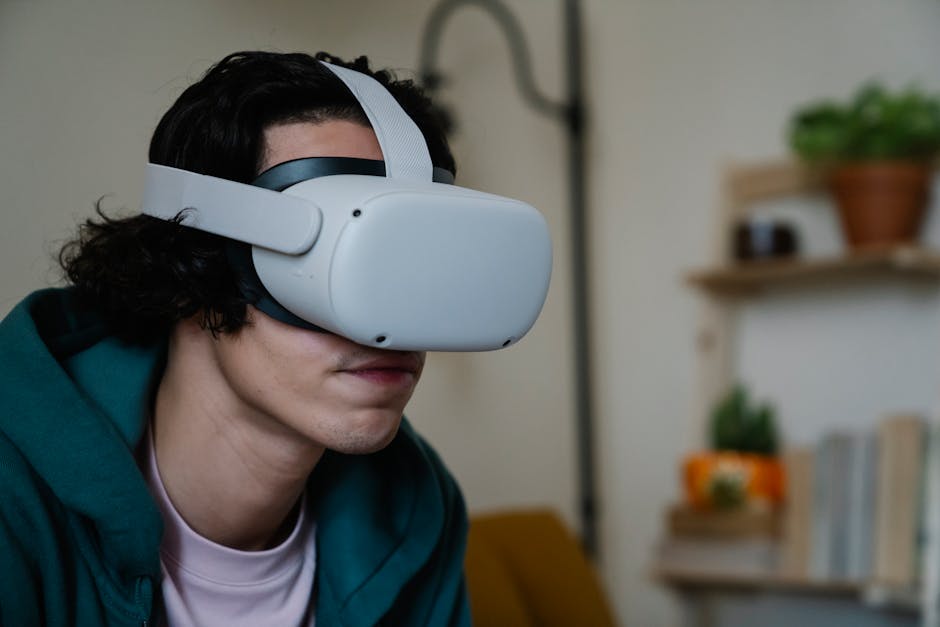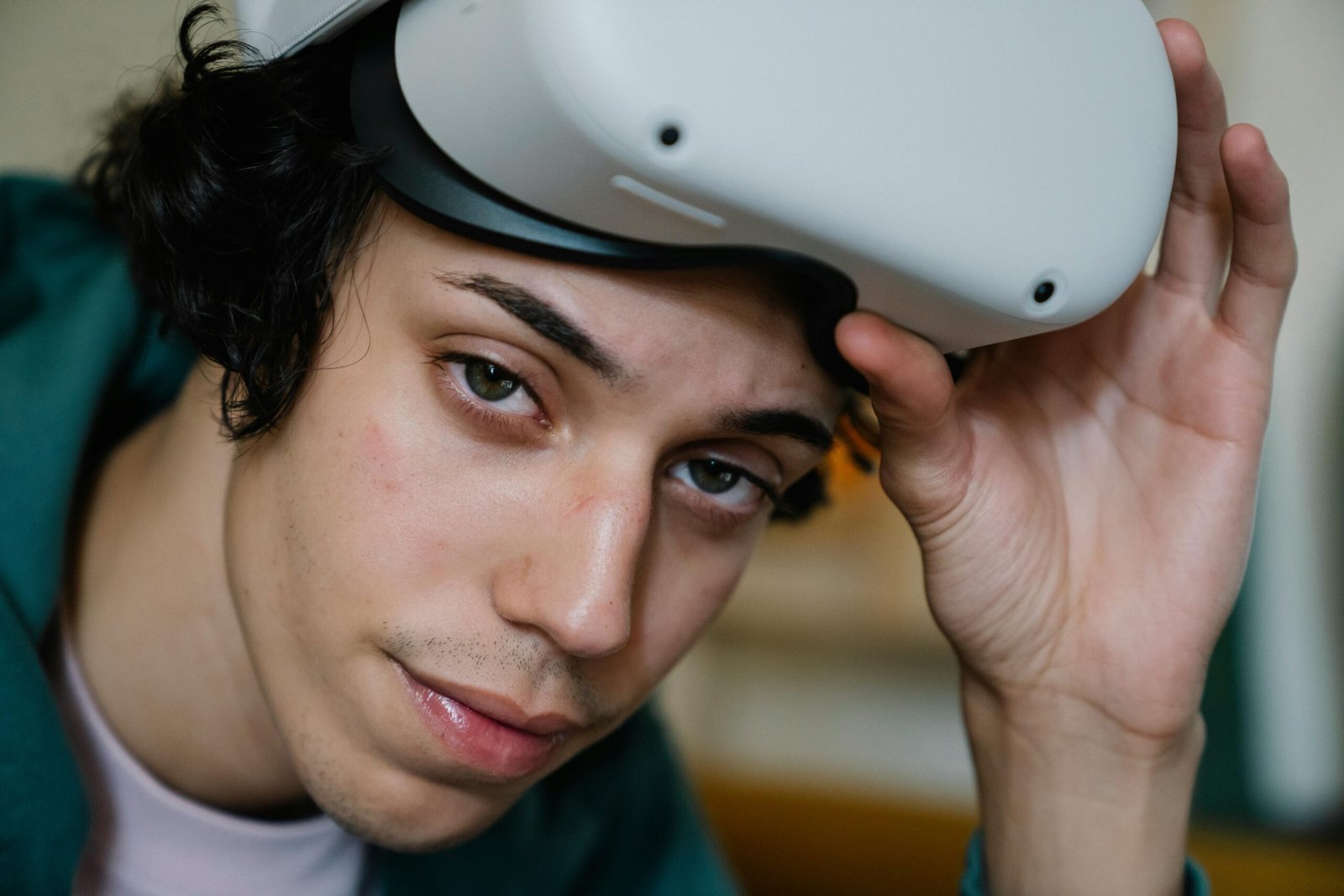Introduction
Imagine going back just fifteen years and trying to explain the concept of wearable tech to someone. We’ve moved at light-speed from that era of bricks called ‘mobile phones’, to an age where we literally clothe ourselves in technology. From Garmin watches that observe our every step, to glasses that open up virtual panoramas, to rings that record our sleep patterns – wearable tech has sneaked its way into our day-to-day lives, becoming almost as essential as the clothes we wear.
In this tech-textile blend, we see an evolution not just of gadgetry, but of mankind itself. We’re living in the digital age, an era of dynamic changes where humans and technology are more intertwined than ever before. The current scenario of wearable tech looks like a science fiction movie made real, but remember – we’re just getting warmed up.
So dust off your crystal balls folks, because we’re about to delve into the future – the year 2024 to be precise. We’ll be taking a hypothetical time-machine ride into the realm of possibilities, exploring what changes we might find weaved into the fabric of our mundane routines. From tracking fitness to revolutionizing the healthcare sector; from transforming fashion to privacy concerns, and from enhancing user experiences to expanding across industries, we’re off on an exciting journey to envision wearable tech in 2024. Buckle up!

Advancements in Fitness Trackers
Getting straight to the point, fitness trackers have come a long way. No longer just a wrist-worn pedometer, these devices have embraced the task of keeping us in our tip-top shape, monitoring everything from step count to heart rate and sleep quality. In fact, it’s become the buddy you want around when you decide it’s high time to shed those extra pounds or simply just to reinforce those mental pep talks you give yourself about staying healthy.
So, what’s coming around the corner in 2024? Well, based on tech trends and some seriously impressive ongoing research, we can look forward to seeing the humble fitness tracker morph into a more insightful and encompassing health and lifestyle tool.
Research in microelectronics and integrated sensors indicates that future-gen fitness trackers will be significantly more accurate. We’re talking move-over-doc-I-got-this level of precise health monitoring. The ability to analyze intricate metabolic and physiological patterns will be a game-changer. Consequently, your device will be able to offer crazy personalized exercise regimes and dietary recommendations. Neat, huh?
With advances in AI, we are also likely to see smarter ‘smart’ fitness wearables. Next-gen devices will be equipped to learn from your behavior patterns and subsequently make predictive suggestions. Think of it as a pocket fitness trainer, giving you advice, motivation and praise…yes praise! Cause who doesn’t like a pat on the back now and then?
Then there are materials science and design changes to get excited about as well. We are heading towards a future with invisible, super elastic and light-weight, yet power-packed devices. These wearables are expected to seamlessly blend into our lives, probably feeling like your second skin.
Well, that’s a chunk taken from the fitness tech future. For fitness enthusiasts (as well as late bloomers like the rest of us), this is exciting news. With such advanced gizmos, who knows we’d soon be flaunting our very own superhero-esque lifestyles. 2024, bring it on!

The Rise of Health Monitoring Wearables
Health monitoring wearables are essentially our personal health advocates that we can carry with us in pockets or wear on our wrists. Over the past few years, they’ve become instrumental in helping individuals keep tabs on various health metrics, offering everything from heart rate tracking to sleep pattern analysis. And without a doubt, they’re getting smarter, more accurate, and more useful.
Fast forward to 2024, and the forecast appears futuristic; we are looking at a hopescape that expects wearables to be even more streamlined and interconnected, yielding comprehensive information about a user’s health. The evolving tech could encompass everything from real-time blood pressure monitoring to glucose level sensors for diabetics, to devices that predict potential health risks before they materialize.
The impacts of these advanced capabilities on healthcare and personal wellness could be monumental. Imagine the potential to improve preventive care and early detection of various health issues, transforming the healthcare landscape in a significant way. For instance, a smartwatch could pick up on arrhythmias unbeknownst to the wearer and alert them to seek medical help.
On the personal wellness front, the advancements could enable individuals to be more proactive about their health, giving them control like never before. Enhanced sleep trackers could provide detailed insights into sleep cycles, REM, and deep sleep, helping users understand and thereby improve their sleep quality. Fitness wearables could offer comprehensive analysis into workout regimens, enabling users to better understand their body’s response to different physical activities, thus helping to personalize fitness plans for optimum results.
So, the future of health monitoring wearables, it appears, isn’t just about adding more bells and whistles, but enhancing the quality of care – both preventative and ongoing – while empowering users to take their wellness decisions into their own hands. How’s that for a future-forward approach?

Tech Wearables and Fashion
Just a while ago the mere idea of intertwining fashion and technology was like trying to mix oil and water, but not anymore. As we look around, tech wearables have already started flirting with the fashion industry – with smart watches that can be adorned with designer bands, rings that track biometrics, and even fitness trackers camouflaged into chic bracelets. The evolution has started and it’s not stopping anytime soon.
The year 2024 doesn’t look like just a speck in the distance anymore, but a realistic timeline where we could potentially witness some runway-worthy tech wearables. The integration of fashion and tech will no longer be limited to accessories. Ever thought of a shirt that could monitor biometrics or shoes that could charge your phone? Outlandish as they may sound now, come 2024 they might just be a regular fixture.
Expected to lead this forward march could be mammoth tech players such as Apple and Google who are already paving the way. However, niche designer wearables could find a unique place in the market as well. Emerging brands like Oura with their wellness ring and Vinci with their smart headphones are just a couple of examples of how fashion-tech is taking on a new persona.
Tech wearables of the future might just redefine fashion accessories. Not only will they look smart, but they’ll also ‘be’ smart. An amalgamation of design aesthetics with intelligent tech could lead to a fashion revolution of sorts. However, the true marriage of tech and fashion will come with seamless integration, without one overpowering the other.
The world of fashion in 2024 is poised to be much more than just style and trends. It’s gearing up to blend couture with code, style with sensors; welcoming a world where chic meets geek, head-on. Brace for impact, it’s going to be a techulous ride!

Wearable Tech and Data Privacy
In our current digital age, the topic of data privacy is highly relevant—particularly when it comes to wearable technology. These devices collect a wide range of personal data, which leads to several questions about data security and usage.
Wearable Tech in 2024
As wearable tech continues to grow, these questions about data privacy will become more pressing. The main concerns stem from:
- Increased number of IoT devices: As more devices connect to the internet, potential privacy issues could multiply.
- New products and services: As new products and services emerge, these could constantly collect data, and this continuous surveillance may raise privacy concerns.
Despite these concerns, the sector is also predicted to develop ways to protect user privacy.
Privacy Protection Measures
Potential advancements in privacy protection include:
- Edge computing: This approach involves processing and storing data at the source, ultimately reducing the risk of data interception.
- Improved encryption methods: The development of stronger and more efficient encryption methods could secure data more effectively.
Future Legal Frameworks and Consumer Responsivity
Regulatory bodies are often challenged to keep up with rapidly evolving technology. However, anticipation for more robust legal frameworks to ensure data privacy grows. Future legal perspectives may emphasize:
- Transparency: Companies might be required to disclose explicitly how they use data collected from wearable devices.
Consumers may also need to shoulder some of the responsibility for their privacy. This might involve:
- Understanding digital rights: Users will need to be more informed about their digital rights.
- Data Permissions: Vigilance is needed concerning the data permissions that users grant to apps and services.
In 2024, we hope to see a balance between the convenience offered by wearable tech and necessary privacy protection, creating a respectful co-existence between humans and machines.
User Experience and Wearable Tech
When it comes to the growth of wearable tech, user experience plays a pivotal role. After all, a wearable might boast the most cutting-edge capabilities, but if it’s cumbersome or unintuitive to use, it’ll inevitably gather dust on a shelf rather than be worn on a wrist.
With each passing day, tech companies are realizing the value of providing a seamless user experience, and in many ways, it has become a battleground. The effectiveness of wearable tech is not only about what it can do technologically but also how it can engage the user on a personal level.
By 2024, we can expect significant strides in this arena. According to ongoing research and development trends, user experience is projected to improve in several key dimensions. One such dimension is personalization. The future of wearable tech will likely include more context-aware devices capable of learning from an individual’s routines and behavior. This will enable wearable tech to deliver a hyper-personalized experience, potentially revolutionizing the way users interact with their devices.
Another critical development we might see is the merging of physical and digital realities. Advances in augmented reality (AR) and virtual reality (VR) can extend the user experience, bringing a whole new dimension of interaction and engagement. Image seeing your health stats overlay real-world views or experiencing immersive guided workouts right at home.
Furthermore, the challenges of user interface and control for small, wearable devices are being addressed too. For instance, the exploration of voice control, gesture-based interaction, and non-screen displays could result in wearables that respond intuitively to the user, mitigating the constraints of size.
Ultimately, the pattern is clear; the future of wearables hinges on a marriage of advanced capabilities, personalization, intuitive interaction, and engaging experiences. However, developers must continue to strike a balance between functionality, comfort, privacy, and affordability, as wearables continue to weave their way into the fabric of everyday life.

Cross-Industry Applications of Wearable Tech
Wearable tech, initially isolated to the realms of fitness, health, and digital communication, is branching out and embedding itself into a wider diversity of industries. Today, we can see gadgets like smartwatches, virtual reality headsets, smart clothing, and even tech tattoos sauntering their way into different sectors, changing the way we work, play, and navigate life.
From the manufacturing floor to the adrenaline-pumping world of extreme sports, wearable technology is revolutionizing how we do things. Devices like smart glasses are aiding factory workers with instant schematics and free-hands operation, improving efficiency and safety. On the other hand, advanced sport tech wearables such as GPS watches, heart rate sensors, and wearable cameras are reshaping training strategies and performance tracking in sports like running, cycling, and swimming.
If we imagine the scene in 2024, the cross-industry convergence of wearable tech may be far more advanced. Take agriculture, for instance. Farmers could use wearable devices to monitor their livestock’s health or employ drones to keep a birds-eye view on crop conditions. Similarly, in the hospitality industry, we could see wearable tech facilitating language translation and navigation assistance, making travel and communication a seamless experience for international guests.
Beyond the conventional business scene, wearable tech might also impact our emergency services. Consider a wearable device that could provide firefighters with real-time data in a smoky room or a smart helmet that could alert the nearest medical center in case of an accident. These are not just plains of imagination, but genuine possibilities that could transpire in the coming years.
The evolution of wearable tech promises to transform not just the industries themselves but also the roles within them. The stethoscope of a medical professional might be replaced with advanced health monitors while architects might design buildings through VR headsets. The functionalities as we understand them today could be reshaped, fostering a new definition of efficiency and workability.
To conclude, wearable tech offers enormous potential for cross-industry applications. The roadmap to 2024 seems overwhelmingly exciting, with the prospect of this technology profoundly transforming our habits, productivity, and even the job market. While it’s hard to pinpoint exactly how these advancements will unfold, one thing seems clear: immersive, interactive, and personalized experiences are at the heart of the future of wearable technology.

Conclusion
In this exploration of the future of wearable tech, we’ve seen that the landscape in 2024 will be brimming with both exciting opportunities and daunting challenges.
The Evolution of Wearable Tech
Wearable technology is on the brink of moving from just being fitness trackers to becoming a transformative force in numerous industries. Some even refer to it as our second skin. The advancements in health monitor wearables and the surge in tech wearables in fashion point towards a future where technology collaboratively innovates with various sectors.
This joint innovation promises to redefine:
- Personal Wellness
- Our interaction with technology
- Utilization of technology as a mirror to our minds and bodies
The Challenges of Wearable Tech
Despite its many positives, the rise of wearable tech comes with its concerns. Data privacy, for instance, is a rising issue as these wearables delve deeper into capturing personal information. Even so, strides are being made in privacy protection and laws. Looking forward to 2024, we expect a more robust system for privacy protection, but we should still take a vigilant approach to personal data privacy.
Additionally, user experience will continue to play a pivotal role in the ongoing and future success of wearable tech. We foresee enhancements in user experience by 2024 that will further promote user engagement with wearable tech, pushing usability and practicality into uncharted territories.
Final Thoughts
In a nutshell, the evolution of wearable tech promises fascinating changes, advancements, and opportunities. As this discussion concludes, the conversations elsewhere continue and evolve. We urge you to stay alert for the developments. The potential of wearable tech to shape society, the future, and even ourselves, is not ending here. It renews daily. So, watch this space!
